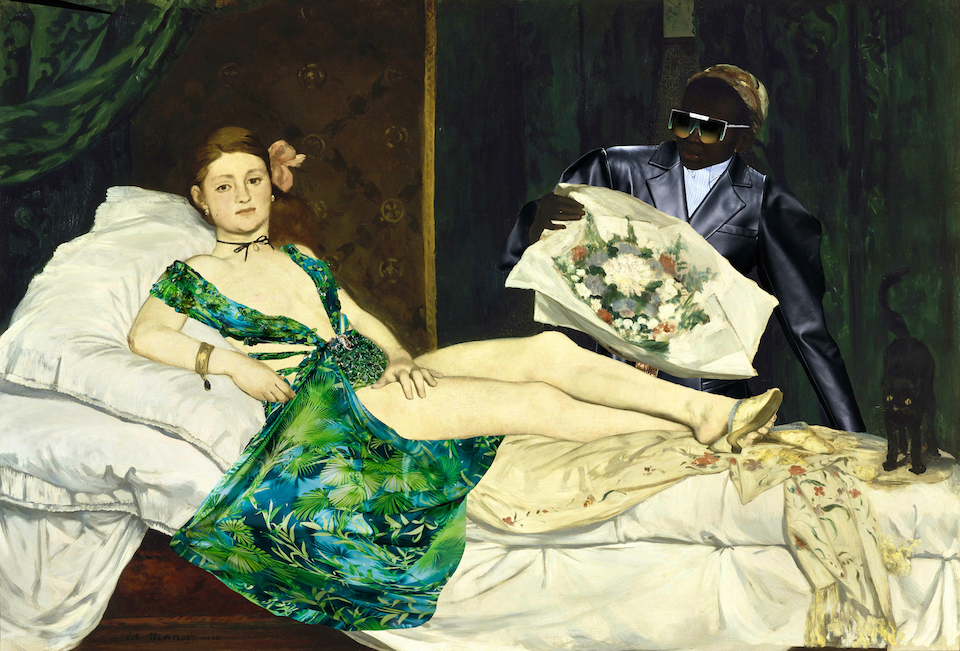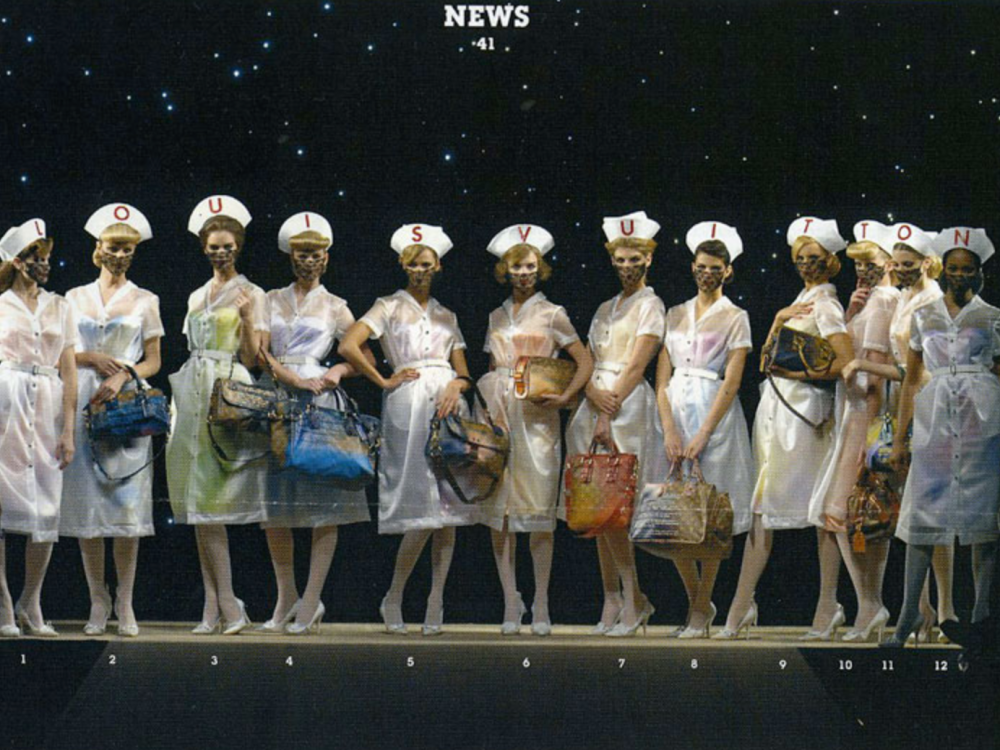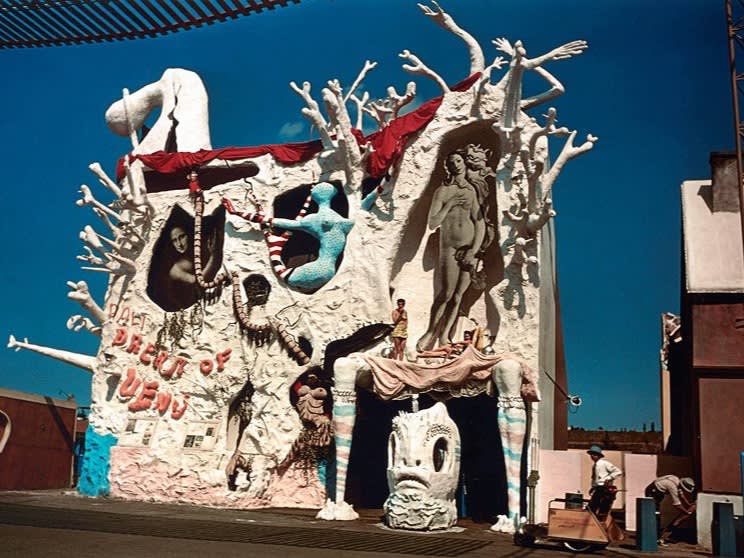Urs Fischer
Sloppy Problem, 2013
Jean Royère
"Egg" Armchairs, 1953
Fried, scrambled, boiled, poached — eggs have been stimulating minds as a source of creative inspiration for decades now. Today these oval-shaped shells packed with protein are more than brain food, they’ve inspired what we wear, where we sit, the environment in which we live, and the art that we look at.
A Fertile Figure
Ah, the egg. Incredible. Edible. It’s our brain on drugs. Indeed, few things beckon, incite, and intrigue quite the way eggs do. They are a near-universal symbol of life, of rebirth, of spring (think: Easter eggs). But the egg is not just a symbol of life: its discrete and fragile shell houses, and propels, life itself. Unlike say, a flag, an egg’s significance and function are intimately intertwined.
Eggs are what we might call embodied icons, their significance inseparable from their distinctive silhouette. In fact, this makes eggs so compelling that we call anything egg shaped, “oval” — from the Latin “ovum” meaning, yes, egg. If you’ve ever read George Bataille’s “Story of the Eye,” a short story telling sordid tales all stimulated by a shape — eyeballs, testicles,…and eggs — you know how profoundly eggs compel and attract us.
This distinctive combination of materiality and meaning has made the egg a fertile figure for artists and designers. Fried, scrambled, boiled, poached — eggs have long been a source of creative inspiration. These protein-packed shells are more than nourishment: they’ve inspired what we wear, where we sit, the environment in which we live, and the art we look at.

Pair of Jean Royere GRAND OEUF (EGG) Lounge Chairs
Refined & Elemental: Danish Design
When Jean Royere gave the world his Egg “Oeuf” Chair in 1950, a popular breakfast food migrated from kitchen to living room. In the following six years, the French designer introduced an accompanying egg stool, egg sofa, and egg chest of drawers, completing the ideal oval furniture set.
In the later 1950s, Danish architect Arne Jacobsen was commissioned to design furniture for the Royal Hotel in Copenhagen. In 1958, Jacobsen released his rendition of an egg chair for the hotel’s lobby. The chair’s fabric-covered rounded shell, set on an aluminum base, was an instant hit in its ability to provide privacy and comfort for lounging. The chair went into immediate production through Fritz Hansen and its shape has since become synonymous with Danish furniture design. The egg really epitomizes modern design: clean lines that convey elemental meaning.
Balenciaga
Egg Coat, 1960
Balenciaga
Fall/Winter 2006
Balenciaga
Fall/Winter 2006
An Effortless Silhouette: Balenciaga
In the early 1960s, Cristóbol Balenciaga developed a new outwear silhouette he called the “Egg” Coat. Rounded at the shoulders and bulbous in the back with low-set arms, the cut of the coat gave Balenciaga’s woman an ideal couture shape without any effort on part of the wearer. This cut was quickly imitated throughout the swinging 60s and popularized once again by Nicolas Ghesquière in his Fall/Winter 2006 collection for the house of Balenciaga.
Figure & Form: Lucio Fontana, Oldenburg, Koons, Dali
Throughout the 1960s, as the popularity of eggs in the arts continued to rise, fine artists took a cue from the world’s expanding appreciation for the internationally beloved breakfast food. In 1963, Italian painter and sculptor Lucio Fontana began his important series of “Concetto spaziale, La Fine di Dio” (1963–64), exploring the endless artistic possibilities in generating perforations through thick layers of paint on an egg-shaped canvas.
Throughout the decade, sculptor Claes Oldenburg took a far more intentional approach to the inclusion of the breakfast food in his wildly expansive and seemingly “edible” oeuvre with his “Fried Egg in a Pan” (1961) and “Sculpture in the Form of a Fried Egg,” (1966/71). Canadian artist Carole Itter has continuously returned to eggs throughout her career, most notably in 1974 with her “Raw Egg Costume,” a wacky fusion of sculpture and performance art.
Jeff Koons
Bread with Egg, 1995-97
Jeff Koons
Cracked Egg, 1995-1999
Jeff Koons
Cracked Egg, 1994-2006
Jeff Koons
Baroque Egg with Bow, 1994-2008
In a contemporary context, Jeff Koons produced a number of pieces within his “Celebration” series, a body of work that commenced in the 1990s which featured eggs as a primary subject. From large scale paintings such as “Bread with Egg” and “Cracked Egg,” along with two egg sculptures, “Cracked Egg” and “Baroque Egg with Bow.”
Swiss artist, Urs Fischer, has depicted a variety of egg preparations within his work — from painted fried egg sculptures made of resin to realistically rendered cracked hardboiled eggs and miniature cast bronze sculptures with the featured egg left intact. Fischer even devoted an entire series of “Problem Paintings” in 2013 to hardboiled eggs on headshots, a robust and stimulating body of work — a veritable feast for one’s eyes and appetite.
Dali, of course, loved eggs. Symbolizing rebirth, eggs stood as an emblem of purity and perfection to the Spanish surrealist, so much so that the late artist included them as the focal point of countless paintings and scattered them over the roofs of both his home and museum. The Dali Theater and Museum in Figueres, Spain, bears a robust egg-scattered crown, while the artist’s home in Cadaques on the Costa Brava, where Dali lived and worked from 1930–1982, has a handful of perfectly intact oval objects strewn atop its roof.
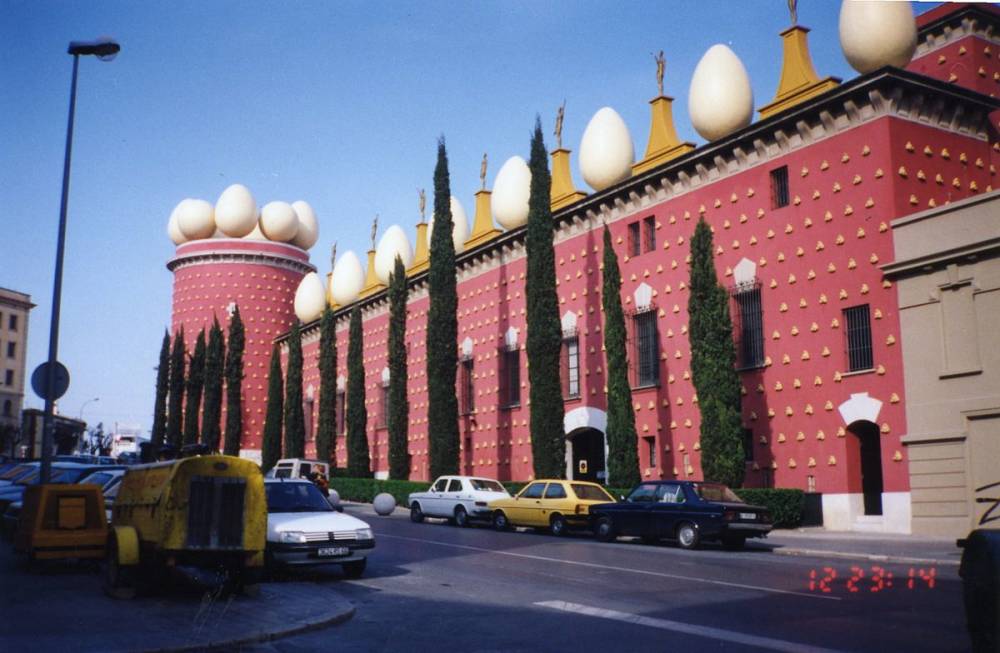
Dalí Theatre and Museum
Figueres, Spain
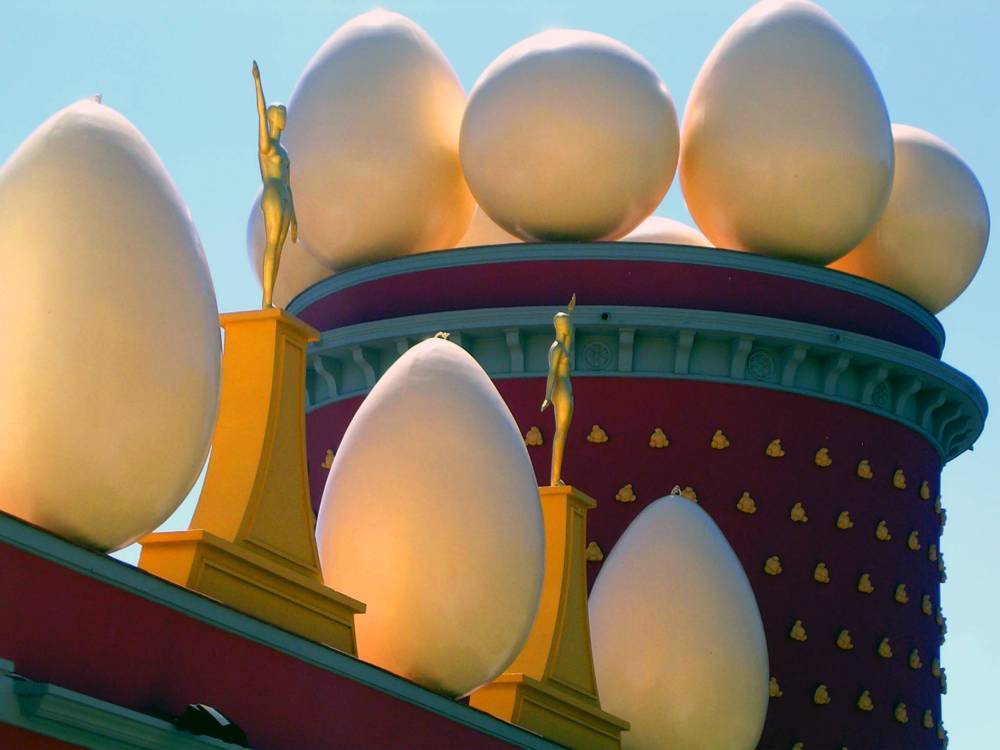
Dalí Theatre and Museum
Figueres, Spain

Dali's Home
Cadaqués, Spain

Dali's Home
Cadaqués, Spain
Endlessly fertile, eggs appear across a wide range of creative expression — from the clean elegance of Danish furniture to the garish sheen of Koons’ sculpture; from Dali’s obsessive proliferation to Fabergé’s ornate luxury; from George Bataille’s graphically sordid story to Balenciaga’s refined coat, eggs feed our emotions, thoughts, and imagination. And may very well adorn our living rooms, walls, and bodies. Regardless of one’s dietary preferences, there are certainly enough eggs around for even the pickiest of eaters.
